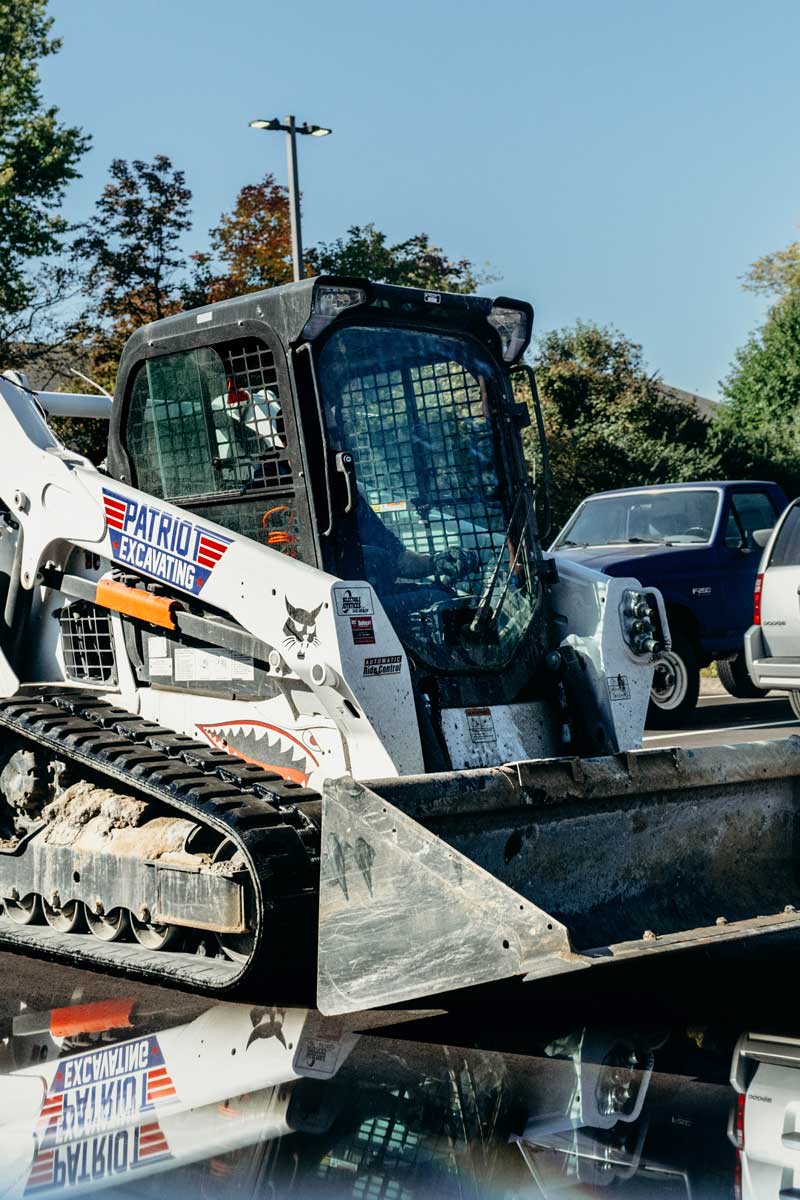Whether you’re embarking on a new home construction project, a commercial development, or even a backyard pool installation, the excavation process is the critical first step. This guide delves into the various stages involved, from planning and preparation to actual digging and removal of soil.
Planning and Preparation
The groundwork for a successful excavation begins with meticulous planning. This planning stage acts as the blueprint for your project, ensuring a smooth and safe operation. Excavation planning involves a thorough understanding of the project’s scope, including the depth and size of the required excavation. Factors like the intended purpose of the excavation and the type of soil on the site will influence these dimensions.
Excavation contractors work closely with you to determine the most efficient and cost-effective approach, considering factors like the materials to be removed, the timeline for completion, and any environmental considerations. Through this collaborative process, the excavation plan will also address logistics like the safe removal of spoils (excavated material) and the potential need for shoring or sloping to prevent cave-ins. By investing time in thorough excavation planning upfront, you can avoid costly delays, safety hazards, and unexpected surprises during the actual excavation work.
Obtaining Permits and Ensuring Safety
Before digging commences, securing the necessary excavation permits is crucial. These permits, often obtained through your local building department, may vary depending on the project type (residential excavation vs. commercial excavation) and the specific location. Underground utility locating is another vital step. Professional services identify and mark any underground utilities like gas lines, water pipes, and electrical cables, to prevent accidental damage during excavation.
Pre-Construction Excavation
The initial stage of excavation often involves site excavation. This entails clearing the designated area of any vegetation, debris, or existing structures. Depending on the project’s scale and complexity, this site prep can range from a relatively straightforward task to a multi-faceted undertaking. It may involve the meticulous removal of topsoil, preserving the fertile upper layer for later use in landscaping.
In some cases, it might necessitate the careful extraction of trees, ensuring root systems are addressed to prevent future problems. For more complex projects, site excavation could involve the demolition of old buildings or structures, requiring specialized equipment and a focus on safety protocols. Throughout this stage, careful attention should be paid to ensure proper disposal of cleared materials in adherence with environmental regulations and to make sure the site is prepared for the next stage of excavation.
Types of Excavation
Once the site is cleared, the excavation progresses to its core purpose. For new home construction, this might involve foundation excavation to create a stable base for the home’s foundation. Basement excavation requires digging a deeper pit to accommodate a below-ground living space. Pool excavation, on the other hand, involves creating the precise shape and depth needed for your new swimming pool.
Trenching is a specialized type of excavation that involves digging narrow ditches for laying pipes, electrical cables, or drainage systems. Unlike broader excavations that create large, open pits, trenching or drainage excavation focuses on creating a channel deep enough to bury the specific utility lines it will house. The depth and width of trenches will vary depending on the specific purpose. For example, electrical conduits carrying high voltage may require a deeper trench for safety reasons, while irrigation systems for gardens might only need shallow trenches to accommodate smaller pipes.
Beyond depth, the width of the trench also factors in. It needs to be wide enough to allow for the safe installation of the pipes or cables, while also providing adequate space for the surrounding bedding material (such as sand or gravel) that protects the utilities and aids in drainage. Experienced trenching contractors plan the layout and dimensions of the trench to ensure it meets all safety and functionality requirements for the specific project.
Excavation Debris Removal and Safety
The excavation process naturally generates a significant amount of leftover soil and rock, commonly referred to as excavation debris. Excavation contractors will typically handle the removal and disposal of this material at an appropriate landfill site.
Throughout the life of your project, excavation safety is paramount. Excavation contractors are responsible for implementing proper safety measures to protect workers and anyone near the excavation site. This may involve shoring up trench walls to prevent cave-ins, using designated walkways to avoid tripping hazards, and having proper personal protective equipment readily available.
The Cost of Excavation: Factors to Consider
The cost of excavation can vary significantly depending on several factors. The size and depth of the excavation, the type of soil being removed, and the complexity of the project all play a role in determining the final cost. Excavation service providers will typically be able to provide a detailed estimate based on your specific project requirements.
By understanding the different stages of excavation and the importance of planning and safety, you can approach your next project with confidence. A well-executed excavation lays the foundation for the successful construction of your dream home, a new commercial building, or a refreshing outdoor living space.
If you’re embarking on a project that requires excavation, call Patriot Excavating today! We are the Indianapolis area’s go-to provider of premium sitework, sewer, water, drainage, concrete, and demolition services. From excavating for your new pool to trenching for underground power lines and septic system installation to demolition, Patriot Excavating is the partner you need to ensure your dirt-y is completed on-time, on-budget, and to your satisfaction.
Contact us today to get a FREE quote for your next excavation project!



